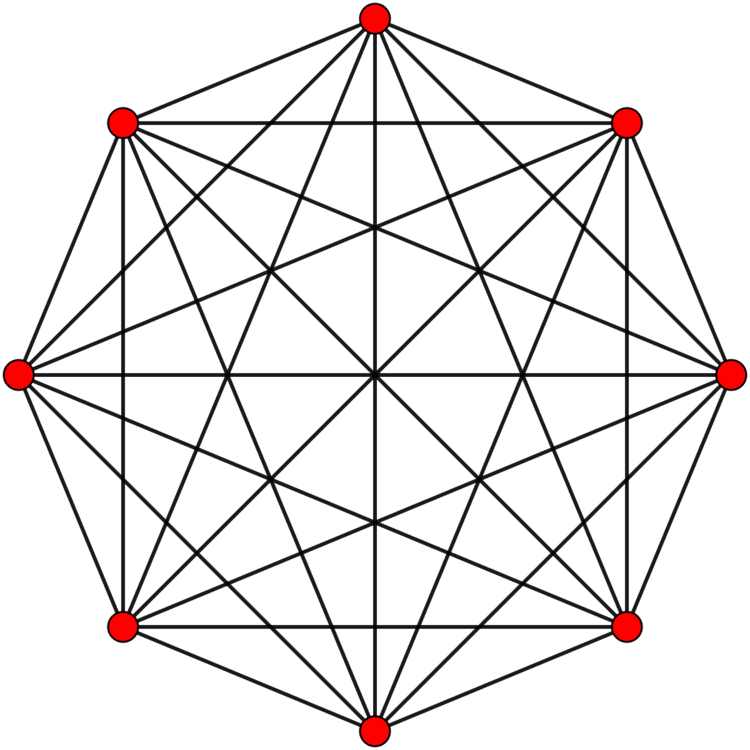 | ||
In seven-dimensional geometry, a rectified 7-simplex is a convex uniform 7-polytope, being a rectification of the regular 7-simplex.
Contents
- Rectified 7 simplex
- Alternate names
- Coordinates
- Birectified 7 simplex
- Trirectified 7 simplex
- Related polytopes
- References
There are four unique degrees of rectifications, including the zeroth, the 7-simplex itself. Vertices of the rectified 7-simplex are located at the edge-centers of the 7-simplex. Vertices of the birectified 7-simplex are located in the triangular face centers of the 7-simplex. Vertices of the trirectified 7-simplex are located in the tetrahedral cell centers of the 7-simplex.
Rectified 7-simplex
The rectified 7-simplex is the edge figure of the 251 honeycomb. It is called 05,1 for its branching Coxeter-Dynkin diagram, shown as .
E. L. Elte identified it in 1912 as a semiregular polytope, labeling it as S1
7.
Alternate names
Coordinates
The vertices of the rectified 7-simplex can be most simply positioned in 8-space as permutations of (0,0,0,0,0,0,1,1). This construction is based on facets of the rectified 8-orthoplex.
Birectified 7-simplex
E. L. Elte identified it in 1912 as a semiregular polytope, labeling it as S2
7. It is also called 04,2 for its branching Coxeter-Dynkin diagram, shown as .
Alternate names
Coordinates
The vertices of the birectified 7-simplex can be most simply positioned in 8-space as permutations of (0,0,0,0,0,1,1,1). This construction is based on facets of the birectified 8-orthoplex.
Trirectified 7-simplex
The trirectified 7-simplex is the intersection of two regular 7-simplexes in dual configuration.
E. L. Elte identified it in 1912 as a semiregular polytope, labeling it as S3
7.
This polytope is the vertex figure of the 133 honeycomb. It is called 03,3 for its branching Coxeter-Dynkin diagram, shown as .
Alternate names
Coordinates
The vertices of the trirectified 7-simplex can be most simply positioned in 8-space as permutations of (0,0,0,0,1,1,1,1). This construction is based on facets of the trirectified 8-orthoplex.
The trirectified 7-simplex is the intersection of two regular 7-simplices in dual configuration. This characterization yields simple coordinates for the vertices of a trirectified 7-simplex in 8-space: the 70 distinct permutations of (1,1,1,1,−1,−1,−1,-1).
Related polytopes
These polytopes are three of 71 uniform 7-polytopes with A7 symmetry.
